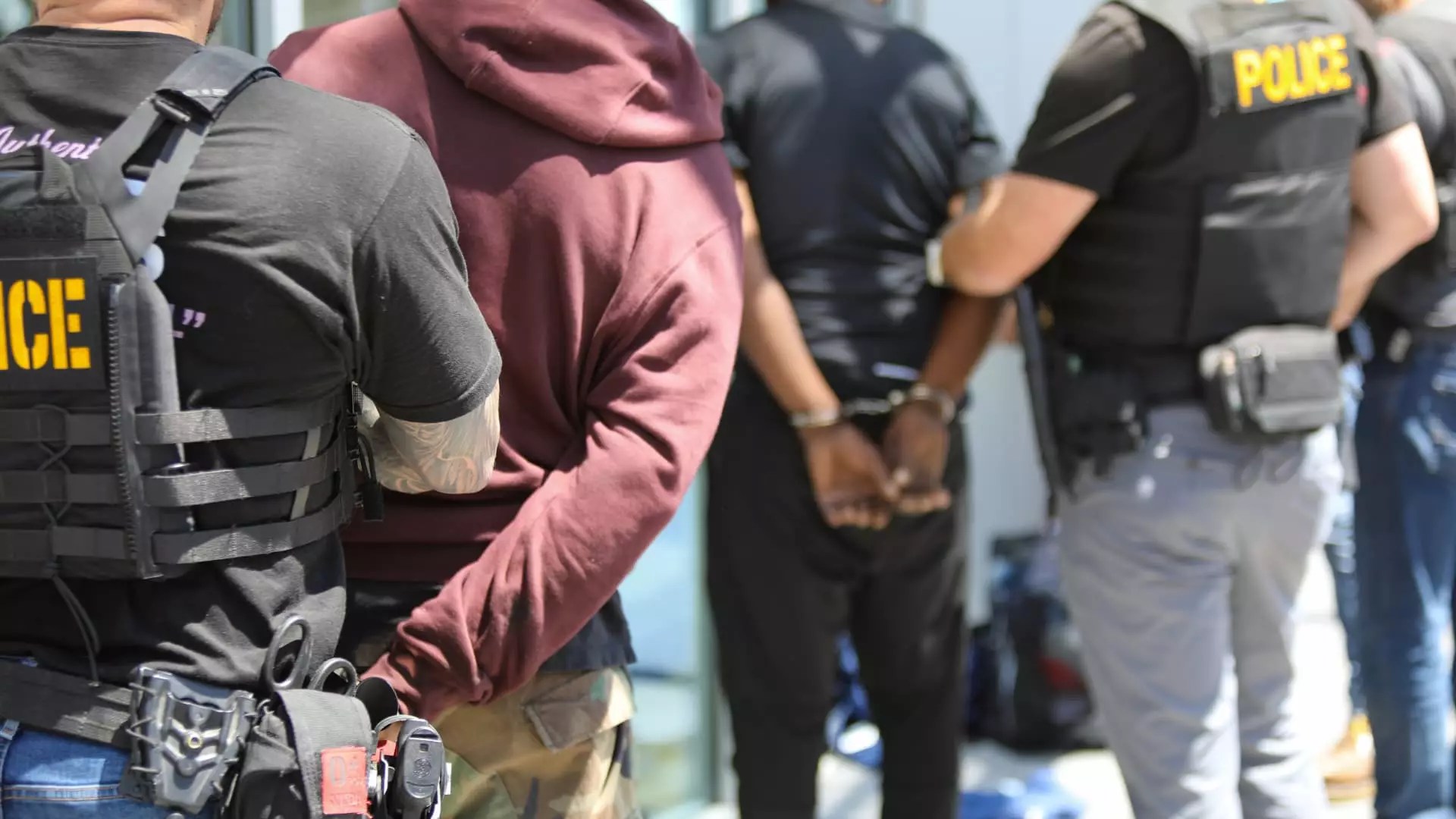Recent initiatives by law enforcement agencies across the United States have culminated in an unprecedented crackdown on organized retail crime, a serious and growing issue affecting businesses and consumers. Last week, authorities conducted a coordinated operation that resulted in hundreds of arrests spanning 28 states. This initiative, a first of its kind led by Cook County’s regional organized crime task force, targeted major retailers such as Target, Macy’s, and Walmart among others. Cook County Sheriff Tom Dart encapsulated the sentiment of the entire operation when he stated, “When you give specific focus to a crime, it reverberates.” The message was clear: criminal activity detrimental to commercial interests will not go unchecked.
The scale of organized retail crime has reached alarming heights—stealing from stores isn’t just the work of solo thieves anymore but rather a structured enterprise. With 93% more incidents reported in 2023 as compared to 2019, the situation has spiraled into something that requires urgent attention. This data is shocking; it underscores not just an uptick in petty theft but a systemic failure to respond effectively until now. Law enforcement is waking up to this reality, and this operation represents a flirtation with accountability that must continue moving forward.
Legal Reform: A Necessary Evolution
Another element that makes this crackdown noteworthy is the changing landscape of legal enforcement surrounding retail theft. Cook County State’s Attorney Eileen O’Neill Burke has championed reforms that bring charges for felony retail theft at a much lower threshold than before. Where charges used to be predicated on thefts exceeding $1,000 or on repeat offenders with ten previous convictions, the bar has now been lowered to $300. Since this pivotal change, the Cook County State’s Attorney’s Office has filed charges in 1,450 felony retail theft cases. This is a seismic shift that holds potential implications for deterring organized crime, and it exemplifies a much-needed evolution in how our legal system addresses these crimes.
Critics would argue that this reform is long overdue and highlight how lax laws have enabled recidivism among criminals. The current legal framework is not just inadequate; it has contributed to a culture of impunity among offenders. Lowering the threshold for felony charges is a crucial step towards instilling a sense of fear in potential thieves. However, it must also be complemented with robust prosecutorial resources and a judicial commitment to uphold these new standards.
The Importance of Public-Private Partnerships
Collaboration between law enforcement and retail corporations is yet another vital factor contributing to the success of this crackdown. The blitz saw active participation from over 30 retailers who spearheaded efforts alongside law enforcement agencies. The emphasis on intelligence-sharing facilitates a more strategic approach to tackling retail crime. Companies like Ulta Beauty and Walgreens took an active role in reporting incidents and providing crucial information that could aid investigators—this kind of cooperation is invaluable.
It stands to reason that when retailers align their interests with those of law enforcement, the results can be mutually beneficial. Retailers are not only fighting back against theft; they are also cultivating a safer shopping environment, improving customer trust, and ultimately benefiting their bottom line. Companies like Target have recognized that investing in preventive measures alongside law enforcement can translate into tangible reductions in theft-related losses.
The Road Ahead: Sustaining Momentum
As the dust settles from this intense operation, the challenge ahead lies in maintaining momentum. A one-off spike in arrests, while commendable, won’t translate into lasting change if the dedication to policing these crimes wanes. Perhaps even more crucial is the need to address the root causes that lead to organized retail crime, including socioeconomic factors that push individuals into criminality. A holistic approach—one that includes job training, community outreach, and supportive services—could serve as a long-term deterrent and mitigate perennial issues underpinning crime.
Moreover, ongoing dialogue about the thresholds for felony charges will continue to shape our response to retail crime. As more data emerges from this first wave of enforcement, it will be imperative to remain adaptive and responsive. We cannot afford to see this recent crackdown as the zenith of effort; rather, it should be viewed as the beginning of a new era of accountability in our consumer landscape. The fight against organized retail crime is far from over, but it is a battle that is now recognized for its critical importance.


Leave a Reply